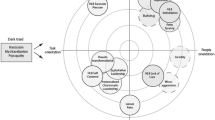
Overview
- Reveals how childhood experiences shape the leaders we are today, and what to do about it
- Shows how leaders can remain effective under pressure and stress
- Combines rigorous research with practical guidance and case studies
Access this book
Tax calculation will be finalised at checkout
Other ways to access
About this book
Where do your instincts come from and how can you improve them?
Stretched by heavy workloads and facing ever more complex environments, leaders increasingly find themselves running on automatic and relying on their instincts. But depending on instincts is a bit like gambling, and as a result, stress levels, mistakes and failure rates are all on the up.
In this ground-breaking book, leadership experts Nik Kinley and Shlomo Ben-Hur reveal how our instincts are the products of childhood experience - lessons learnt that have become written into the structure of our brains. Like the source code at the centre of a computer, they underpin almost every aspect of our functioning as leaders. They affect how we interpret and experience things, how we react to events, the environments we choose, the impact we have on people, and even the responses we trigger in others.
Often these instincts and tendencies are hidden beneath professional poise. But under pressure, when we are deprived of time, they come to the fore. This is why leading under pressure can bring out the best and the worst in us. And it is why – ultimately – leadership is a test of the character of our instinctual code.
Based on decades of research, this book shows how we get to be the leaders we are today. It explains the tendencies and inclinations that past experiences can leave us with and the hidden ways in which they can affect who we are as leaders and how we behave. And crucially, it shows how we can make better use of our instincts and even improve them to become better leaders.
Similar content being viewed by others
Keywords
Table of contents (18 chapters)
-
Front Matter
-
Looking Behind the Mirror
-
Front Matter
-
-
Seeing Things for What they Really are
-
Front Matter
-
-
Maintaining your Composure
-
Front Matter
-
-
Dealing with People
-
Front Matter
-
Reviews
"Masterfully unveils the profound link between our pasts and our leadership, presenting a clear roadmap connecting childhood events to impactful leadership. A game-changer in self-discovery and leadership evolution." (Reus Rosa, Chief Executive Officer, WiseMoving Technologies Corporation)
"Life as a leader is busy and intense, and it is easy to forget our past. But our past does not forget us. This book explains how our past impacts our behaviour and decision-making as leaders and, by extension, the results of the whole organisation." (Aušra Vankevičiūtė, Chief Executive Officer, Staticus)
Authors and Affiliations
About the authors
Nik Kinley is a London-based consultant and coach with over 30 years’ experience assessing leaders, changing people’s behaviour, and evolving orgnisational cultures. His varied background includes commercial roles, senior corporate HR positions (with BP and Barclays), and consulting roles, as well as over a decade working in prisons as a forensic psychotherapist.
Shlomo Ben-Hur is an organisational psychologist and professor of leadership and organisational behaviour at the IMD business school, Switzerland. Prior to this, he spent more than twenty years in the corporate world holding senior executive positions, including at BP, DaimlerChrysler, and Sloan-Kettering.
Bibliographic Information
Book Title: Re-writing your Leadership Code
Book Subtitle: How your Childhood Made You the Leader You Are, and What You Can Do About It
Authors: Nik Kinley, Shlomo Ben-Hur
DOI: https://doi.org/10.1007/978-3-031-52395-3
Publisher: Palgrave Macmillan Cham
eBook Packages: Business and Management, Business and Management (R0)
Copyright Information: The Editor(s) (if applicable) and The Author(s), under exclusive license to Springer Nature Switzerland AG 2024
Hardcover ISBN: 978-3-031-52394-6Published: 05 March 2024
Softcover ISBN: 978-3-031-52397-7Published: 02 April 2025
eBook ISBN: 978-3-031-52395-3Published: 04 March 2024
Edition Number: 1
Number of Pages: XVI, 211
Number of Illustrations: 16 b/w illustrations, 1 illustrations in colour



